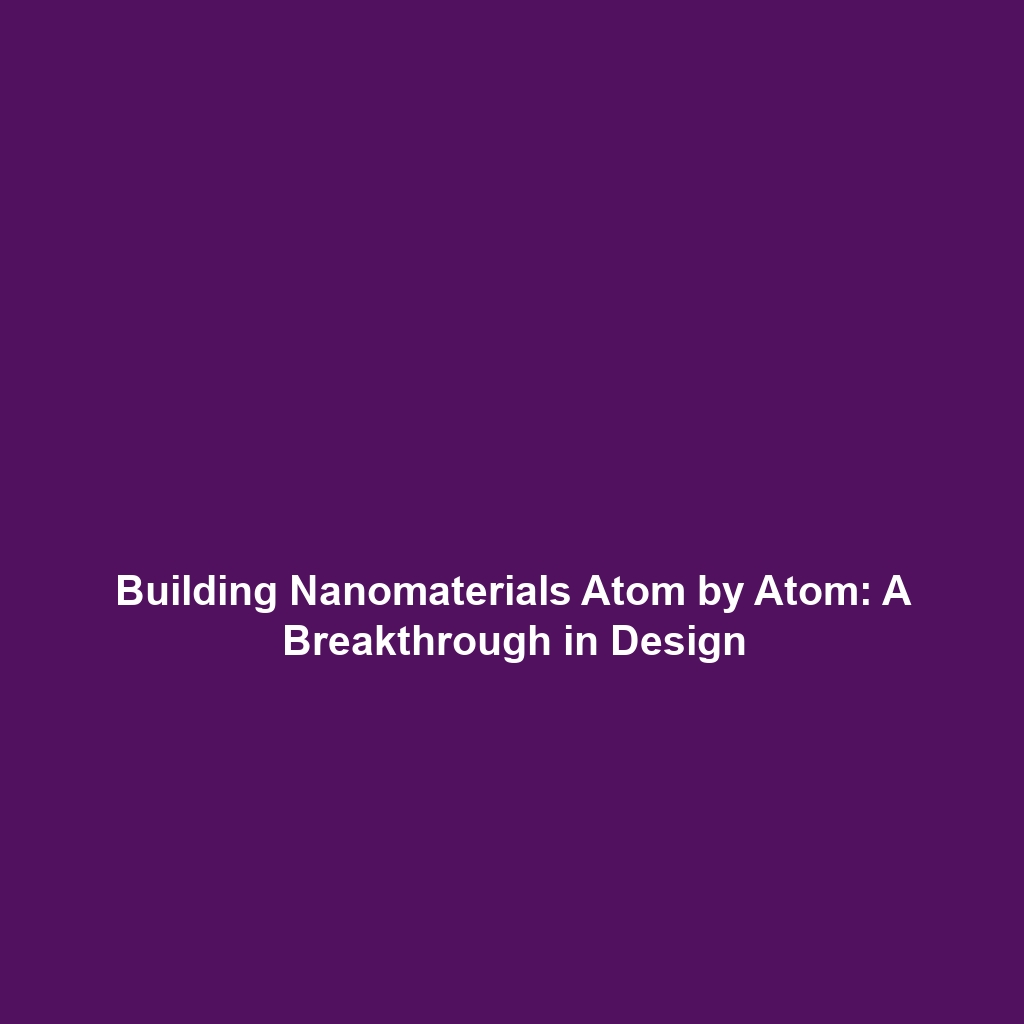Building Nanomaterials Atom by Atom or Molecule by Molecule
Introduction
The process of building nanomaterials atom by atom or molecule by molecule represents a paradigm shift in the field of Advanced Nanomaterials. It is a technique that allows for precise control over material properties, leading to enhanced performance in various applications. As the demand for innovative materials continues to increase, understanding the significance of this method within the broader context of nanotechnology is crucial. This article delves into the core principles behind this approach, its applications, relevant challenges, and future research directions.
Key Concepts
Principles of Nanomaterial Construction
Building nanomaterials at the atomic or molecular level involves several key principles:
- Top-down Fabrication: This technique involves breaking down bulk materials into nanoscale dimensions.
- Bottom-up Synthesis: Conversely, this method constructs nanostructures from individual atoms or molecules, facilitating precise control over the material’s properties.
- Self-Assembly: Molecules naturally organize into well-defined structures guided by intermolecular interactions.
These principles are interconnected, contributing to the development of advanced nanomaterials with tailored characteristics for specific applications.
Applications and Real-World Uses
The applications of building nanomaterials atom by atom or molecule by molecule are extensive and continually evolving. Some prominent uses include:
- Drug Delivery Systems: Nano-carriers designed to deliver therapeutics directly to targeted cells.
- Nanocomposites: Materials enhanced with nanoscale additives for improved strength and durability, often used in aerospace and automotive industries.
- Nanosensors: Devices that utilize nanomaterials for detecting environmental pollutants or biological pathogens.
- Energy Storage: Nanostructured materials that enhance the efficiency of batteries and supercapacitors.
These applications highlight how building nanomaterials atom by atom or molecule by molecule plays a crucial role in the advancement of Advanced Nanomaterials across various fields.
Current Challenges
Despite the numerous advances, several challenges persist in the study and application of building nanomaterials at such precise levels:
- Synthesis Complexity: The processes can be intricate and require precise conditions.
- Scalability Issues: Transitioning from laboratory-scale production to industrial applications poses significant hurdles.
- Material Stability: Ensuring long-term stability and performance of nanomaterials can be challenging.
- Regulatory Compliance: Meeting safety regulations for new materials can slow down innovation.
Future Research and Innovations
Future advancements in nanomaterials are expected to address these challenges through ongoing research and innovative techniques. Anticipated areas of development include:
- Smart Nanomaterials: Responsive materials that adapt to environmental changes.
- 3D Nanoprinting: Techniques for precise micro- and nanoscale printing technologies.
- Integration with AI: Utilizing artificial intelligence to optimize synthesis processes and material properties.
- Sustainable Nanomanufacturing: Focusing on eco-friendly production methods for nanomaterials.
These innovations promise significant impacts on the future of Advanced Nanomaterials, paving the way for new scientific and industrial breakthroughs.
Conclusion
In summary, building nanomaterials atom by atom or molecule by molecule is a pivotal method within the domain of Advanced Nanomaterials, providing numerous applications and introducing specific challenges that require attention. Ongoing research and forthcoming innovations are likely to address these issues, leading to a new era in nanotechnology. For more insights into advanced materials, consider exploring our articles on Advanced Nanomaterials and Applications of Nanotechnology.

